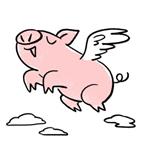So far we’ve only been able to make statements in Korean. This chapter will explain how to ask questions, as well as how to respond. We’ll also learn an additional way of referring to other people. Then, we’ll learn how to connect two nouns together using "and" – "pizza and cola."
Conversation

김철수: 선생님, 안녕하세요. 잘 지내세요?
김영희: 아, 네. 김철수 씨도 잘 지내세요?
김철수: 네. 요즘 무엇을 합니까?
김영희: 저는 학생들을 가르칩니다.
김철수: 무엇을 가르칩니까?
김영희: 저는 수학과 과학을 가르칩니다.
김철수: 저도 수학과 과학을 배우고 싶습니다.
김영희: 정말 배우고 싶습니까?
김철수: 네. 하지만 숙제와 시험을 싫어합니다. 선생님은요?
김영희: 하하. 저도 숙제와 시험을 싫어합니다.
Try reading the conversation on your own before we start dissecting it. Got it? Okay, let’s start.
Actually, before we go over the conversation, let’s learn how to ask questions in Korean.
Verb Stem + ㅂ니까/습니까
Just like when we conjugated the present tense (ㅂ니다/습니다), making questions is done in the same way. Take the verb stem (review Chapter 5 if you’re not sure) and add ㅂ니까 if it ends in a vowel, or add 습니까 if it ends in a consonant. Add a question mark to the end just like in English.
가다 → 가 + ㅂ니까
→ 갑니까?
받다 → 받 + 습니까
→ 받습니까?
하다 → 하 + ㅂ니까
→ 합니까?
먹다 → 먹 + 습니까
→ 먹습니까?
김치를 좋아합니까?
"Do you like kimchi?"
네, 김치를 좋아합니다.
"Yes, I like kimchi."
김치를 먹습니까?
"Do you eat kimchi?"
네, 김치를 먹습니다.
"Yes, I eat kimchi."
Now let’s look over the conversation.
김철수: 선생님, 안녕하세요. 잘 지내세요?
"Hello teacher. Are you doing well?"
What is a 선생님?
In Chapter 5 we learned about 씨, and how it can be used to mean "Mr.," "Mrs.," or "Miss" when attached to the end of a person’s full name or last name.
선생님 can mean "Mr." when attached to a male’s full name or last name, or it can also mean "Sir" when used on its own. Using 선생님 can be even more polite than using 씨, so use it when you’re able to with older males.
김 선생님
"Mr. Kim"
김철수 선생님
"Mr. Kim Chul-soo"
선생님
"Sir"
However, 선생님 can also be used as a polite way to refer to someone who is a teacher. When used to mean "teacher," it can be used for both males and females.
선생님
"Teacher"
김 선생님
"Mr./Mrs./Miss Kim" (who is a teacher)
Note that although 선생님 can mean "teacher," it is not necessary that they be your teacher.
잘 지내세요 is a common and polite way to ask someone if they are doing well. 잘 is an adverb which means "well."
김영희: 아, 네. 김철수 씨도 잘 지내세요?
"Ah, yes. Are you doing well too, Mr. Kim Chul-soo?"
Remember that 도 ("also," "even," "too") is attached directly to whatever it’s used with – in this case 씨, since 씨 is a title and counts as part of the person’s full name. It would be incorrect to say 김철수도 씨.
김철수: 네. 요즘 무엇을 합니까?
"Yes. What do you do these days?"
요즘 means "lately," "nowadays," or "these days."
무엇 means "what" (it even kind of sounds like "what"). Here, since we’re using the verb 하다 after it, 무엇 is acting as an object, and therefore is followed by the Object Marker.
무엇 can be used in many situations.
무엇을 먹고 싶습니까?
"What do you want to eat?"
무엇을 좋아합니까?
"What do you like?"
무엇이 있습니까?
"What do you have?"
Notice how there’s no pronoun (here, "you") at the start of the sentence above. This is because pronouns in Korean are not necessary unless it is not clear who you are referring to. Here, it’s clear that the speaker is talking about the other person, so it’s not necessary to add the pronoun "you."
김영희: 저는 학생들을 가르칩니다.
"I teach students."
Here, 들 is used after 학생 to emphasize that she teaches multiple students. Without 들, it could be vague whether the teacher is teaching only one student, or more. However, in situations where it’s not vague, remember that 들 is not necessary. When in doubt, don’t add 들.
김철수: 무엇을 가르칩니까?
"What do you teach?"
This is another example of 무엇 being used as an object.
김영희: 저는 수학과 과학을 가르칩니다.
"I teach math and science."
과 and 와
You can use 과 and 와 to connect two nouns together in a sentence, just like "and."
Attach it directly to the first noun it’s placed after. Use 와 when following a vowel, and use 과 when following a consonant.
피자와 콜라
"pizza and cola"
그릇과 젓가락
"bowl and chopsticks"
개와 고양이
"dog and cat"
사람과 동물
"person and animal"
You will still use an Object Marker after listing two or more nouns connected in this manner, but remember to only use one Object Marker after the last noun.
저는 스테이크와 감자를 먹고 싶습니다.
"I want to eat steak and potatoes."
저는 미국 사람과 한국 사람을 좋아합니다.
"I like Americans and Koreans."
김철수: 저도 수학과 과학을 배우고 싶습니다.
"I also want to learn math and science."
There are no new concepts in this sentence, but it combines together several things that we’ve learned. Make sure you’re able to understand this sentence, as well as the whole conversation, before moving on.
김영희: 정말 배우고 싶습니까?
"You really want to learn?"
정말(로) is an adverb that means "really." The 로 is optional.
햄버거를 정말 먹고 싶습니다.
"I really want to eat a hamburger."
저는 정말 프랑스에 갑니다.
"I’m really going to France."
정말 돈이 있습니까?
"Do you really have money?"
정말 can be used almost anywhere in a sentence, just like "really" can be placed anywhere in an English sentence. However, typically 정말 will come before the verb in a sentence.
김철수: 네. 하지만 숙제와 시험을 싫어합니다. 선생님은요?
"Yes. But I dislike homework and tests. What about you, teacher?"
은요 and 는요
은요 or 는요 is a combination of the Topic Marker (which we haven’t yet gone over in detail) and 요. It can be used after a noun to end a question, when there is no other verb to end it.
It would not be polite in Korean to end a sentence with a noun and nothing else. Adding 은요 or 는요 after a noun at the end of your sentence is polite, and gives the meaning of "how about…?" or "what about…?" when you’re asking for more information about something.
Use 은요 when following a consonant, and 는요 when following a vowel.
김철수 씨는요?
"How about Mr. Kim Chul-soo?"
미국 사람은요?
"How about Americans?"
고양이는요?
"What about the cat?"
삼겹살은요?
"How about pork belly?"
학교는요?
"What about school?"
"숙제는요?"
"How about homework?"
Advanced Notes:
Just adding a question mark to the end of a noun (or person), instead of attaching 은요 or 는요, would be the equivalent of repeating what a person said, as if you didn’t hear correctly. However, speaking this way is impolite, and should be avoided.
김영희: 하하. 저도 숙제와 시험을 싫어합니다.
"Haha. I also dislike homework and tests."
In this chapter we learned both 아 ("Ah") and 하하 ("Haha"). In addition to these two, there’s also 헉 ("My gosh"), 휴 ("Phew"), 음 ("Hm"), and many more.
Culture Notes:

돼지꿈 꾸세요!
"Dream of pigs!"
돼지 means "pig," and "꿈" means "a dream," so together 돼지꿈 means "a dream about pigs."
You might find gold colored ceramic pigs in street-side stores while shopping in any city in Korea. This is because in Korea, pigs are considered to be a sign of good luck (they certainly taste delicious).
Although it would be rude to call a person 돼지, just as it would be in English, it is acceptable, and humorous, to tell someone to "dream of pigs" before going to bed. This can be done with the phrase 돼지꿈 꾸세요, which literally means "dream a dream about pigs."
Practice
Translate to English:
1. 김철수 선생님과 김영희 선생님이 한국 사람입니다.
2. 저는 김치와 삼겹살을 좋아합니다.
3. 저는 수학을 정말 좋아합니다.
4. 김철수 선생님은요?
5. 무엇을 먹고 싶습니까?
6. 요즘 무엇을 합니까?
Translate to Korean:
7. "Hello. Are you doing well?"
8. "I am also an American."
9. "Mr. Kim Chul-soo is really a Korean."
10. "I dislike homework but I like math and science."
11. "What do you want to do?"
12. "How about pizza?"
13. "Do you love monkeys?"
New Phrases
잘 지내세요? - "Are you doing well?"
안녕히 주무세요. - "Goodnight." ("Sleep well.")
돼지꿈 꾸세요. - "Dream of pigs."
New Vocabulary
소개(를) 하다 - "to introduce"
아 - "Ah"
하하 - "Haha"
헉 - "My gosh"
휴 - "Phew"
음 - "Hm"
저 - "Uh…"
그 - "Uh…"
선생님 - "Sir," "Mr.," "teacher"
학생 - "student"
잘 - "well" (adverb)
요즘 - "lately," "nowadays," "these days"
정말(로) - "really" (adverb)
파스타 - "pasta"
피자 - "pizza"
콜라 - "cola"
초밥 - "sushi" (vinegared rice with fish, etc.)
회 - "sashimi" (raw fish)
수학 - "math"
과학 - "science"
미술 - "art"
지리 - "geography"
숙제 - "homework"
숙제(를) 하다 - "to do homework"
시험 - "test"
결과 - "result"
무엇 - "what" (noun)
가르치다 - "to teach"
배우다 - "to learn"
기다리다 - "to wait"
앉다 - "to sit"
서다 - "to stand"
눕다 - "to lie down"
차다 - "to kick"
치다 - "to hit"
싸우다 - "to fight"
이기다 - "to win"
지다 - "to lose"
그릇 - "bowl"
젓가락 - "chopsticks"
포크 - "fork"
가위 - "scissors"
풀 - "glue"
스테이크 - "steak"
감자 - "potato"
양파 - "onion"
파 - "green onion"
햄버거 - "hamburger"
소시지 - "sausage"
프랑스 - "France"
힘 - "strength," "power"
자리 - "a seat," "space (for something)"
동물 - "animal"
돼지 - "pig"
꿈 - "a dream"
꿈(을) 꾸다 - "to dream"
춤(을) 추다 - "to dance"
과/와 - "and"